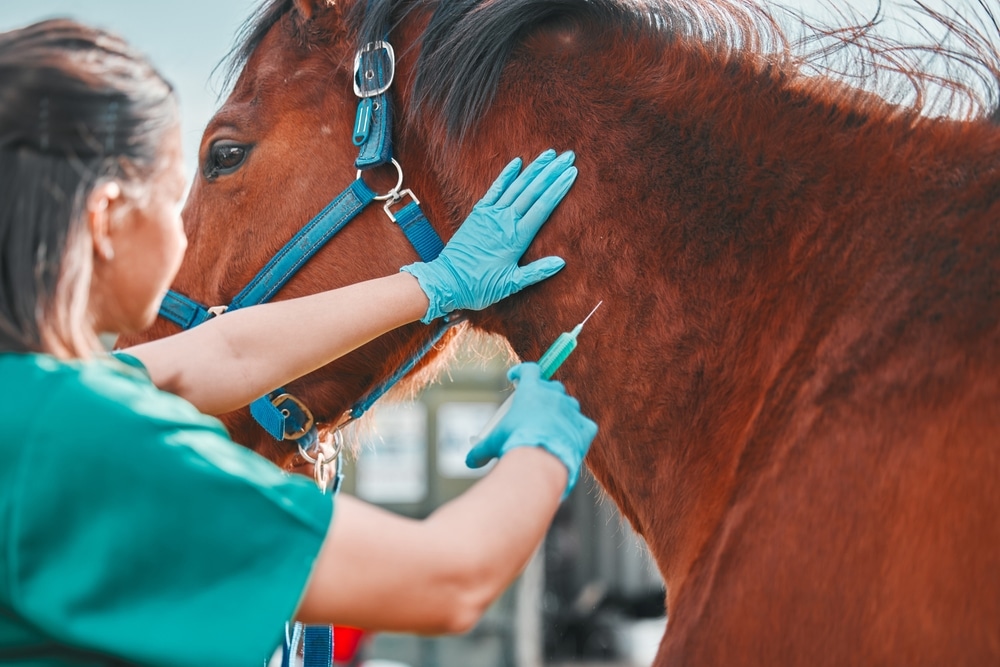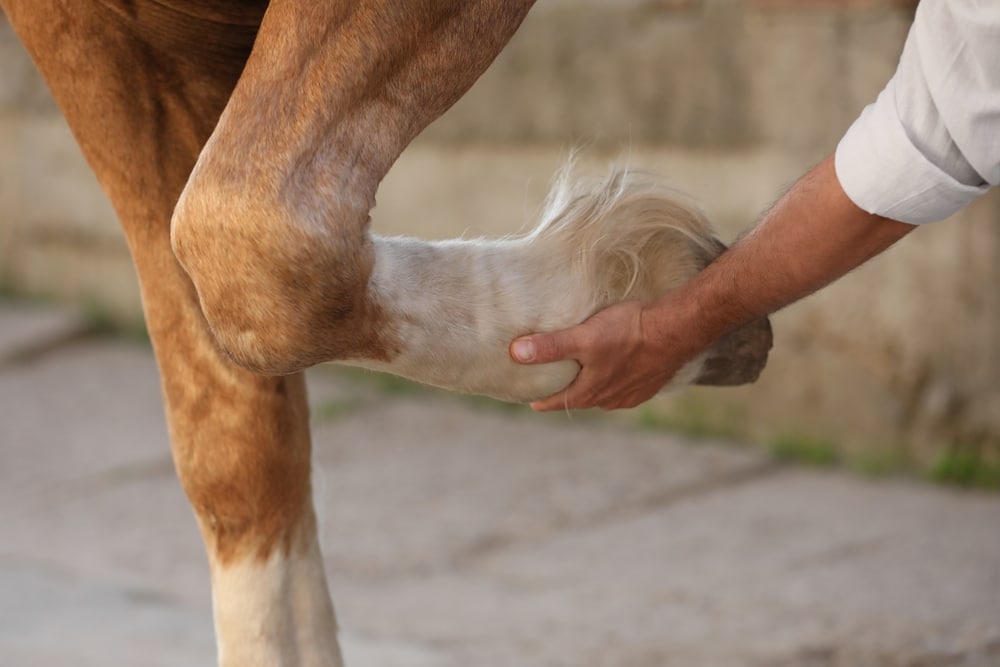Equine arthritis is a degenerative joint disease that gradually deteriorates joint cartilage and underlying bone, leading to pain, inflammation, and reduced mobility. The condition is one of the most common causes of lameness and decreased performance in horses of all ages, breeds, and disciplines. Our Bear Creek Large Animal Clinic team frequently treats horses affected by this debilitating condition, and we answer frequently asked questions about equine arthritis.
What is equine arthritis?
A horse’s healthy joint contains cartilage that provides shock-absorbing properties and contributes to smooth joint movement. Synovial fluid lubricates and nourishes the joint cartilage. Arthritis typically begins with low-level inflammation inside the joint that leads to destructive enzyme buildup. If left untreated, these enzymes damage the joint cartilage, causing the once smooth, slippery surface to become irregular, which results in inflammation, stiffness, and pain. As the condition progresses, the synovial fluid loses its lubrication effectiveness, and the bone underlying the cartilage changes.
What causes equine arthritis?
Several factors can contribute to equine arthritis. Your horse can develop arthritis based on the following factors:
- Age — Older horses are more susceptible to arthritis because of the cumulative effects of years of activity and the aging process’s natural wear and tear.
- Injury — Traumatic injuries, such as fractures, dislocations, or severe soft tissue injuries, can damage joint cartilage and lead to arthritis.
- Conformation — Poor conformation can increase a horse’s arthritis risk. Horses with certain conformational faults may experience uneven stress on their joints, which can lead to arthritis.
- Repetitive strain — Horses in intense training or who perform repetitive work, such as racing and jumping, have a high arthritis risk because of the constant stress on their joints.
- Infection — Bacterial infection within the joint can lead to septic arthritis if not promptly treated.
What are equine arthritis signs?
Early recognition can help manage arthritis effectively. Common signs include:
- Stiffness, especially after rest or during initial movement
- Intermittent or persistent lameness that often worsens after exercise or during cold weather
- Excessive or uneven horseshoe wear
- Unwillingness to stop or turn at high speeds
- Reluctance to pick up or change a lead
- Toe dragging
- Difficulty holding up a limb for trimming or shoe resets
- Poor performance
- Uncharacteristic irritability during tacking up or riding
How is equine arthritis diagnosed?
Diagnosing arthritis begins with a complete history and a thorough physical exam. Other diagnostics may include:
- Palpation — Our team will palpate your horse’s back and limbs, checking for heat, swelling, and decreased range of motion.
- Lameness evaluation — We will observe your horse’s gait at the walk and trot, looking for stiffness or overt lameness.
- Nerve blocks — We may administer nerve blocks to localize your horse’s discomfort.
- X-rays — X-rays can help us assess an affected joint’s damage, although X-ray changes do not always correlate with the level of the arthritis pain.
How is equine arthritis treated?

Arthritis is a progressive condition that has no cure, but management strategies can help alleviate discomfort, slow disease progression, and improve your horse’s quality of life. Treatment strategies include:
- Weight management — Maintaining your horse at a healthy body condition is crucial to reducing stress on their arthritic joints.
- Nonsteroidal anti-inflammatory drugs (NSAIDs) — Medications, such as phenylbutazone (i.e., bute) and flunixin meglumine (i.e., Banamine) may be used to help control acute arthritic pain. Long-term pain management can be accomplished using an antiinflammatory drug called Equioxx. Routine blood panels are typically done annually to address internal organ health when your horse is on long-term anti-inflammatory drugs.
- Joint supplements — Glucosamine, chondroitin sulfate, hyaluronic acid, and other supplements may support joint health.
- Disease-modifying osteoarthritis drugs (DMOAD) — Polysulfated glycosaminoglycans (PSGAGs) and other DMOADs can help slow cartilage degeneration.
- Corticosteroid injections — Corticosteroids can be administered into the joint to provide temporary relief from inflammation and pain.
- Prostride — ProStride is an advanced regenerative medicine that uses the horse’s own blood to produce a concentrated solution that provides anti-inflammatory and healing factors when injected into the affected high-motion joint. When used in conjunction with other treatment modalities, ProStride has a long-lasting treatment effect. The process can be performed on your farm so your horse can be treated the same day.
If you are concerned that your horse may have arthritis, contact our Bear Creek Large Animal Clinic team so we can evaluate their condition and determine an appropriate treatment plan.








Leave A Comment